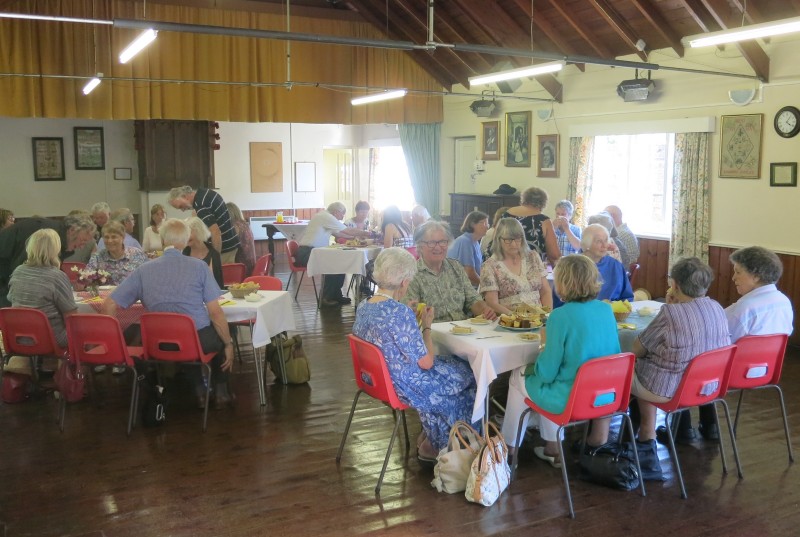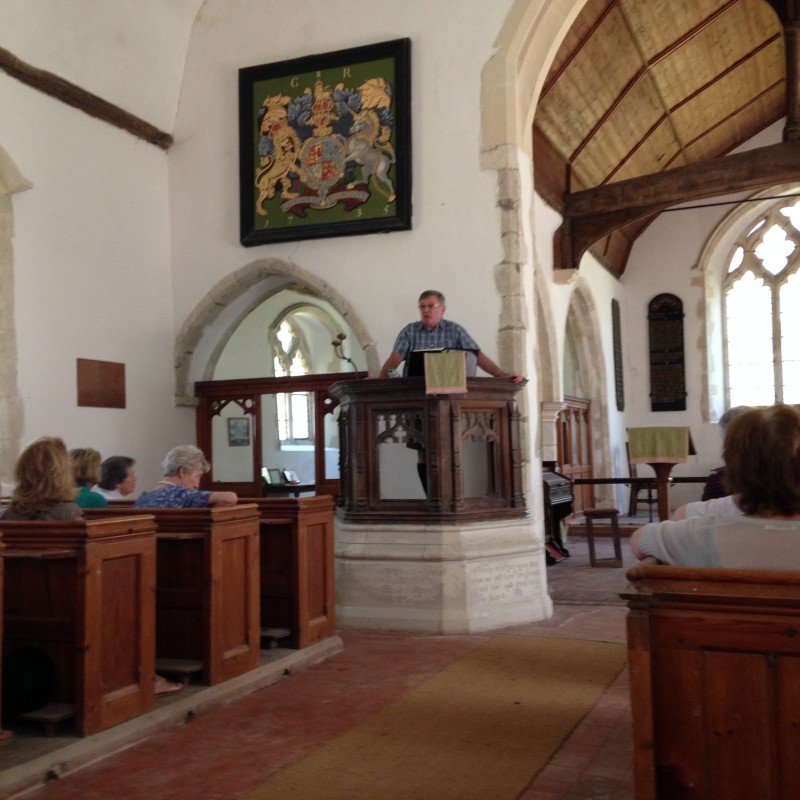In blazing sunshine, thirty five Friends of St Mary’s met at Rye Station Approach to board two community buses for the annual visit to a selection of churches on Romney Marsh. This year, as Friends Chairman and guide for the day, I chose Snave, Appledore and Stone in Oxney.
On the way out, the views of the Marsh were all the better from the elevated position of the buses. In July, the views over the patchwork of flat fertile ground broken up by a myriad of waterways, supports the line that there are more sheep than people on the Marsh!
The first stop was the 13th century Snave church, justifiably known as the “the remote church”, as it is approached along a grassy track. It is dedicated to Saint Augustine giving a clue that there has been Christian worship on the site since Saxon times. The Normans built their stone church on the site, which has been modified over the centuries. Snave was never a large community, but in 1983 the church was declared redundant and its upkeep and maintenance was placed in the care of the Romney Marsh Historic Churches Trust .
Retracing our steps westwards, the next stop was Appledore, where we found a rather asymmetric church. The shape is the result of repairs after the French raids of 1380. There were 13th century floor tiles, a fine Royal Arms and a south side chapel used by the local Horne and then Chute families. In the 200th year after Waterloo there is a gravestone in the church of James Wyatt of the Army Staff Corps, who worked as a Master Bricklayer on the Royal Military Canal and was at Waterloo in June 1815.

Finally, we threaded our way to Stone In Oxney to the Church of St Mary. Predominantly of the 15th century, this elegant building has a tall square tower, providing magnificent views over the surrounding countryside. The oldest part of the church is the South Chapel, where there is a sealed entrance to the stairs that provided access to the rood loft. In the church is a Roman altar stone, made of Kentish ragstone probably from Hythe. This relic may have originally come from Portus Lemanis near Lympne, which was the home of the local Roman naval garrison.
After St Mary’s at Stone, those with previous experience of these outings sensed a sumptuous English “cream tea” not far away and many set off on foot to the 1914-18 Memorial Village Hall of Stone-in-Oxney. We were not disappointed, as on arrival the Women’s Institute (WI) team were loading tables with sandwiches, cakes and scones. After so much delicious food, the return to Rye via the Military Road was soporific but enjoyable! Several participants left asking where next year’s outing would be heading!
Photos: Anthony Kimber



